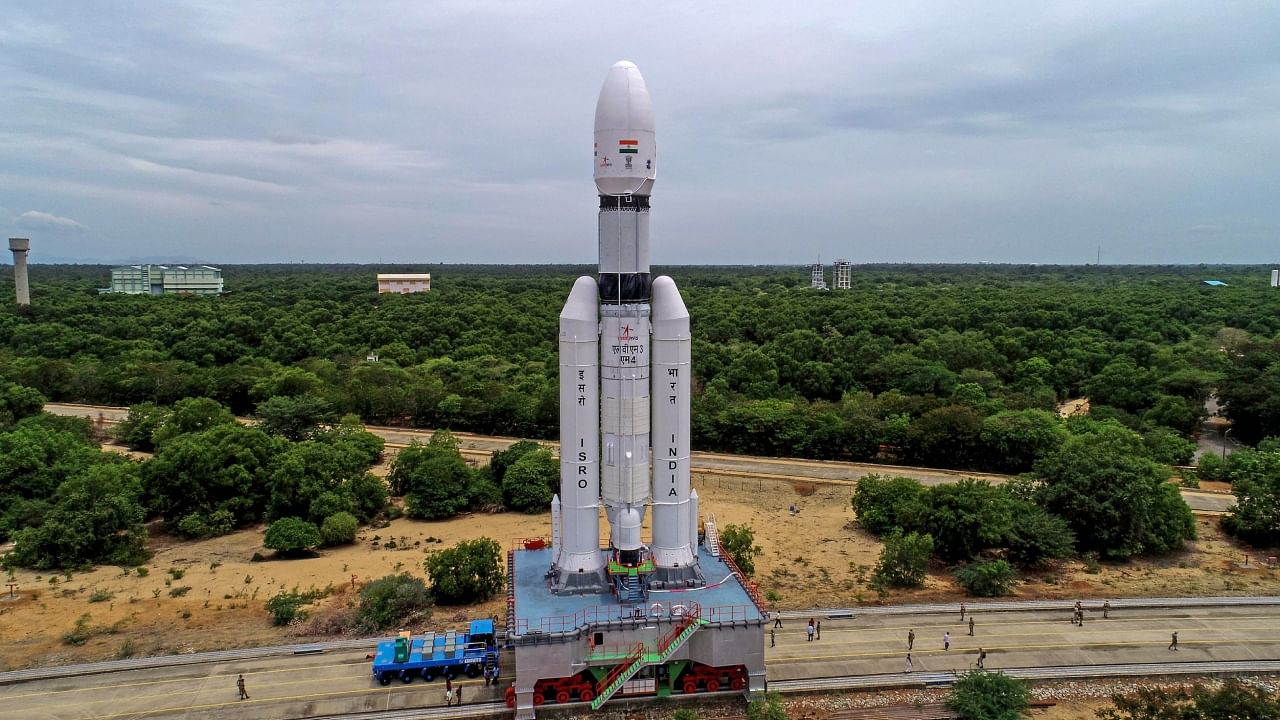
A four-kilometre-long, 2.5-kilometre-wide area near the lunar south pole will be the place where Chandrayaan-3 will touch down in the third week of August, according to Isro chairman S Somanath, as the space agency gets ready for the launch of India’s third lunar mission.
Feeding the coordinates of an area that is 40 times larger than the landing zone of Chandrayaan-2 into the Vikram lander is one of the several key measures that scientists and engineers from the Indian Space Research Organisation (Isro) have undertaken for the latest mission.
The idea is to prevent a recurrence of a Chandrayaan-2-like situation, where the spacecraft crashed into the lunar surface.
“Instead of doing a success-based design like the Chandrayaan-2, we opted for a failure-based design in Chandrayaan-3. We extensively looked at the things that can fail and how to protect them,” Isro Chairman Somanath said on the sidelines of the India Space Congress.
Also Read | ISRO to transfer SSLV to private sector
The mission is slated for launch at 2.35 pm on July 14. The spacecraft, carrying a lander and a rover, will reach the lunar orbit around August 23 and a touchdown is expected anytime in the next 15 days, depending on the craft’s power availability.
The orbiter of Chandrayaan-2, which carries a high-resolution camera that produces lunar surface images of 28 cm dimensions, came to the rescue.
Such images helped the Isro team zero in on the landing site and reduce the chances of an error on the part of the lander, as it will have only to look at boulders bigger than 30 cm in dimensions and pick up the exact touch-down spot.
While designing the new craft, the Isro team had a lot more flexibility to deal with anticipated and, even unforeseen, failures because Chandrayaan-2’s ability to take corrective actions was limited.
Asked about Chandrayaan-2’s reasons for failure, Somanath provided granular details like a “little higher thrust” in five engines meant for slowing down the spacecraft for a smooth descent on the lunar surface.
As the errors happened at a stage when the lander was supposed to be steady for taking pictures, the corrections could not be carried out in time.
“The errors compounded and became higher than expected. The craft had to make very fast turns. When it started to turn very fast, its ability to turn was limited by the software, because we never expected such high rates to come,” Somanath said.
The landing zone was a 500 mt x 500 mt zone, which the craft was trying to reach by increasing the speed, but there was not enough time as the space probe was close to the ground.
“There was a contradictory requirement of reaching the exact spot at low velocity. But it was mathematically difficult to carry out in the available time,” he said.
